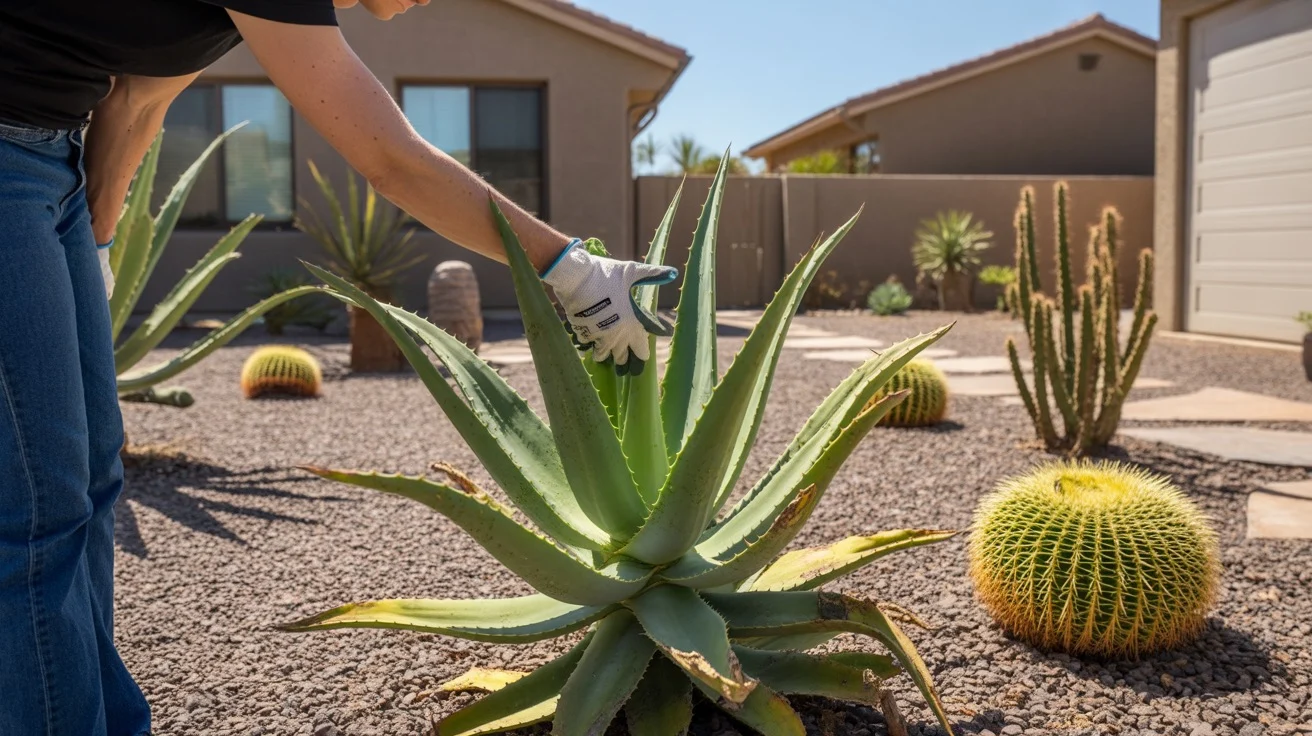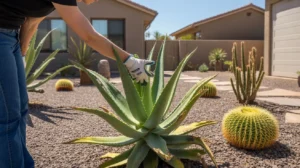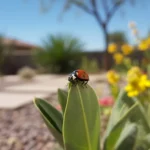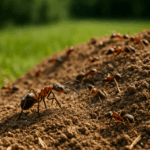As the scorching July sun beats down on Queen Creek yards, it’s not just the heat that threatens your beloved aloe and other desert plants. Summer pests are out in full force, ready to feast on your foliage. But fear not, intrepid gardener! With our expert July pest control plan, you can sound the alarm and defend your aloe from these tiny invaders. 🌵🐞

Know Your Enemy: Common July Pests in Queen Creek
The first step in any successful pest control strategy is to identify the culprits. In Queen Creek, July brings an influx of insects that can wreak havoc on your aloe and other succulents. Keep an eye out for these common offenders:
- Mealybugs: These small, white, cottony pests cluster on aloe leaves and stems, sucking out vital nutrients.
- Scale insects: Resembling small bumps, scale insects attach themselves to aloe and secrete a waxy coating, making them difficult to eradicate.
- Spider mites: Tiny spider mites spin delicate webs on the undersides of aloe leaves, causing yellowing and stippling.
- Thrips: Slender thrips feed on aloe sap, leading to silver-streaked leaves and distorted growth.
By familiarizing yourself with these pests, you’ll be better equipped to spot an infestation early and take swift action. Remember, the sooner you address the issue, the less damage your aloe will sustain. 🔍🌿
Create a Hostile Environment for Pests
One of the most effective ways to control pests in your Queen Creek yard is to make it an inhospitable place for them to thrive. Start by ensuring your aloe and other plants are healthy and well-cared for. A stressed or weakened plant is more susceptible to pest infestations.
Proper watering is crucial for aloe health. Overwatering can lead to root rot, which attracts pests. Allow the soil to dry out completely between waterings, and ensure your aloe is planted in well-draining soil. If you’re unsure about your watering schedule, err on the side of underwatering – aloe is far more tolerant of drought than excess moisture. 💧🌵
Regularly inspect your aloe for signs of pests or disease. Remove any fallen leaves or debris from around the base of the plant, as these can provide hiding spots for insects. If you spot an infestation, isolate the affected plant to prevent the pests from spreading to other areas of your yard. 🔎🍂
Employ Natural Predators
Not all insects are enemies in your Queen Creek yard. Some, like ladybugs and lacewings, are natural predators that can help keep pest populations in check. Encourage these beneficial insects to take up residence by planting a diverse array of native flowers and herbs. 🐞🌼
You can also purchase ladybugs and other predatory insects from garden supply stores or online retailers. Release them near your aloe and other affected plants in the evening, when they’re less likely to fly away. Keep in mind that ladybugs will eventually disperse, so you may need to replenish your supply throughout the summer. 🛒🐞
Another option is to attract insect-eating birds to your yard by providing water sources and native plants that offer food and shelter. Birds like wrens, chickadees, and warblers will happily feast on mealybugs, scale insects, and other pests that threaten your aloe. 🐦🍴
Use Targeted Treatments
Sometimes, despite your best prevention efforts, pests may still gain a foothold in your Queen Creek yard. When this happens, targeted treatments can help you regain control without harming beneficial insects or disrupting the ecosystem. 🎯🌿
For minor infestations, start with a strong spray of water from your hose to dislodge pests like mealybugs and spider mites. Be sure to spray the undersides of leaves, where many pests hide. If the infestation persists, consider using an insecticidal soap or neem oil solution. These natural products suffocate pests without leaving harmful residues on your aloe. 🚿🍃
When applying any treatment, always follow the manufacturer’s instructions carefully. Avoid spraying during the hottest part of the day, as this can cause leaf burn. Instead, treat your aloe in the early morning or evening, when temperatures are cooler and pollinators are less active. ⏰🌡️
Maintain Vigilance
Effective pest control in your Queen Creek yard is an ongoing process, not a one-time event. Even after you’ve successfully eradicated an infestation, remain vigilant for signs of re-emergence. Regularly inspect your aloe and surrounding plants for any signs of trouble. 👀🔍
Keep your yard tidy by removing fallen leaves, trimming back overgrown foliage, and properly spacing your plants to promote good air circulation. A well-maintained landscape is less appealing to pests and easier to monitor for potential problems. 🍂✂️
Remember, the key to protecting your aloe from July pests in Queen Creek is a proactive, multi-faceted approach. By understanding your enemy, creating a hostile environment, employing natural predators, using targeted treatments, and maintaining vigilance, you can keep your aloe healthy and thriving all summer long. 🌵💪









